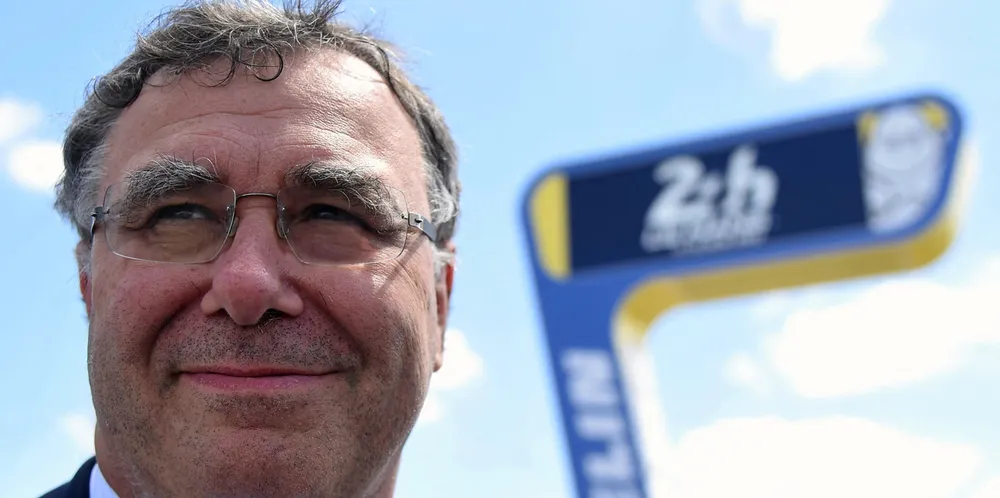Total dominance | Europe's biggest global renewable energy pipeline 'now belongs to an oil giant'
TotalEnergies' portfolio is huge and diverse but its projects are less mature than established green developers, says analyst group Rystad

Amid a string of headlines questioning the durability of oil giants' energy transition plans at a time of resurgent fossil fuel prices, one analyst highlighted how supermajor TotalEnergies has already amassed the largest global renewable project pipeline of any European player – whether 'black' or 'green'.
TotalEnergies is not necessarily abandoning oil and gas any more quickly than its peers, but it is arguably sticking to its pledges more consistently when it comes to building up a renewables portfolio.
Fossil fuel profits
In a strategy presentation to investors in New York last month, CEO Patrick Pouyanne underlined the company’s decision to retrench toward the more lucrative oil projects on offer which, with breakeven costs for its oil assets down to $25 per barrel, are offering rich returns.
Recent 'wildcatting' success in Namibia also demonstrates that the company has not abandoned new frontier exploration in the manner advocated by the International Energy Agency (IEA) as essential to meeting climate targets.
And, like other European supermajors, TotalEnergies is going to tie its renewables investments to larger scale integrated projects to boost the returns on capital, in this case to a targeted minimum 12% promised to investors.
"We can't just copy or become a pure renewable player which sells intermittent power and bets on decreasing costs and decreasing interest rates," Stephane Michel, TotalEnergies' head of Gas, Renewables & Power told the New York gathering.
"Nor can we copy a business model of utilities based on guaranteed prices and high leverage, because we know that those business models are not going to deliver the kind of target we are looking for."
Michel said TotalEnergies needs to grow four to five times higher than its current renewable production and double its output from flexible assets.
“Today we have 20GW of capacity, 6GW under construction and we will meet our target of 35GW by 2025. We have a pipeline of 40GW of early or mid-stage projects post 2025 to fuel the growth,” he said.
Offshore wind will represent only 10-15% of the company’s power production and investment. “Nevertheless, it's an interesting technology," Michel said.
"It's true that costs have increased, and interest rates increasing doesn't help, but at the same time it's clearly a technology that is quite close to our traditional oil and gas activity; long projects, capex-intensive, and of course offshore where you have to manage the execution risk, things at which we are quite good."
TotalEnergies’ strategy points to targeting offshore wind "selectively and profitably".
“Those assets need to be competitive and one of the interesting aspects is especially when the grid is paying for the connection, which is not the case everywhere, but which makes a big difference on your cost of production.... bottom-fixed can, in several markets be competitive and at grid parity, and that's not the case for floating offshore,” Michel said.
Pouyanne told investors the targeted returns for integrated power are based on expectations of growing demand and power constraints bolstering electricity prices in markets such as Germany.
TotalEnergies has also made a habit of announcing major investment projects in a parallel fashion, such as the $27bn of investments promised for Iraq which are primarily geared to natural gas, but will include a 1GW solar power plant to supply the Basrah regional grid, in partnership with Saudi Arabia’s ACWA Power.
Lacking maturity
On the other hand, the early-stage status of many of the projects in the TotalEnergies’ renewables pipeline means that the oil company’s lead comes with a qualification, acknowledges Victor Signes, renewable energy analyst with Rystad Energy.
"It is a huge pipeline... but as long as a project hasn't reached a [final investment decision], we cannot really say that the company has committed on anything," he noted.
"Of course TotalEnergies will be a big player and is already big on the global scene... but if you take into account the maturity of the projects, then it will probably be a company like RWE that has more installed capacity in place in 2030."
The Rystad data also offered a maturity indicator in which Engie, another France-based company came out of top on a matrix of renewables acquisitions and divestments, taking into account this factor.
(Copyright)